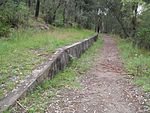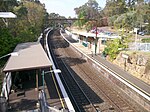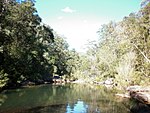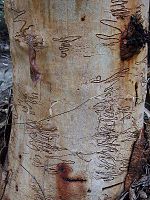Glenbrook Deviation (1892)
1892 establishments in Australia1913 disestablishments in AustraliaClosed regional railway lines in New South WalesGlenbrook, New South WalesHistory of the Blue Mountains (New South Wales) ... and 6 more
Main Western railway line, New South WalesNew South Wales Heritage DatabasePortal templates with redlinked portalsRailway lines closed in 1913Railway lines opened in 1892Use Australian English from January 2012
The Glenbrook deviation was a section of track on the Main Western line from the first Knapsack Viaduct to old Glenbrook station in the Blue Mountains of New South Wales, Australia. The approximately five-mile-long (eight-kilometre) deviation was constructed from 1891 to 1892 and replaced the Lapstone Zig Zag. The deviation was closed in 1913 when it was replaced by the second Glenbrook deviation and the second Glenbrook Tunnel, that continues to carry the Main Western line today.
Excerpt from the Wikipedia article Glenbrook Deviation (1892) (License: CC BY-SA 3.0, Authors).Glenbrook Deviation (1892)
Governors Drive, Sydney
Geographical coordinates (GPS) Address Nearby Places Show on map
Geographical coordinates (GPS)
| Latitude | Longitude |
|---|---|
| N -33.766943 ° | E 150.640596 ° |
Address
Railway Reserve
Governors Drive
2773 Sydney
New South Wales, Australia
Open on Google Maps






